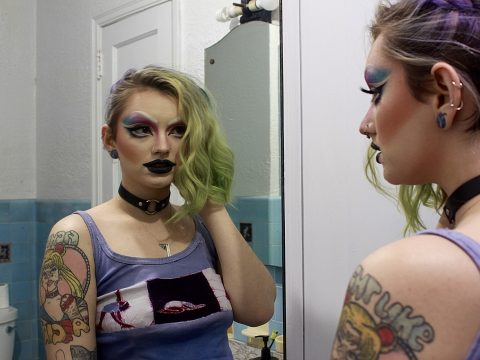
One of our first larger assignments in Conceptual Art was to collect evidence of a concept or idea and apply three different forms to the same evidence. My process of finding a form was a difficult one, stemming from my fairly personal collection of evidence. I gathered seemingly worthless objects to build a set of the carefully saved and curated selection of items I have subconsciously added value to. This included bottle caps and soda tabs I had saved, a key chain I found on the ground, disposable gloves that lived unused in my purse for months, an interesting piece of wood, a half-burned candle, and a broken figurine, among other things.

I have always been a collector – ever since I was a kid, I would save rocks, seashells, coins, screws and bolts, buttons, paint chips, and anything else I felt was too valuable to be thrown away or discarded. As I’ve gotten older, I have realized that my affinity for keeping broken or worthless things that others would label as trash is directly related to my mental health. The worse I’m doing, the more I feel the need to grasp onto these material representations of my obsessions. My first form is an attempt to visualize the almost holy nature given to these objects by the sort of worship that goes into keeping, protecting, and treasuring them.
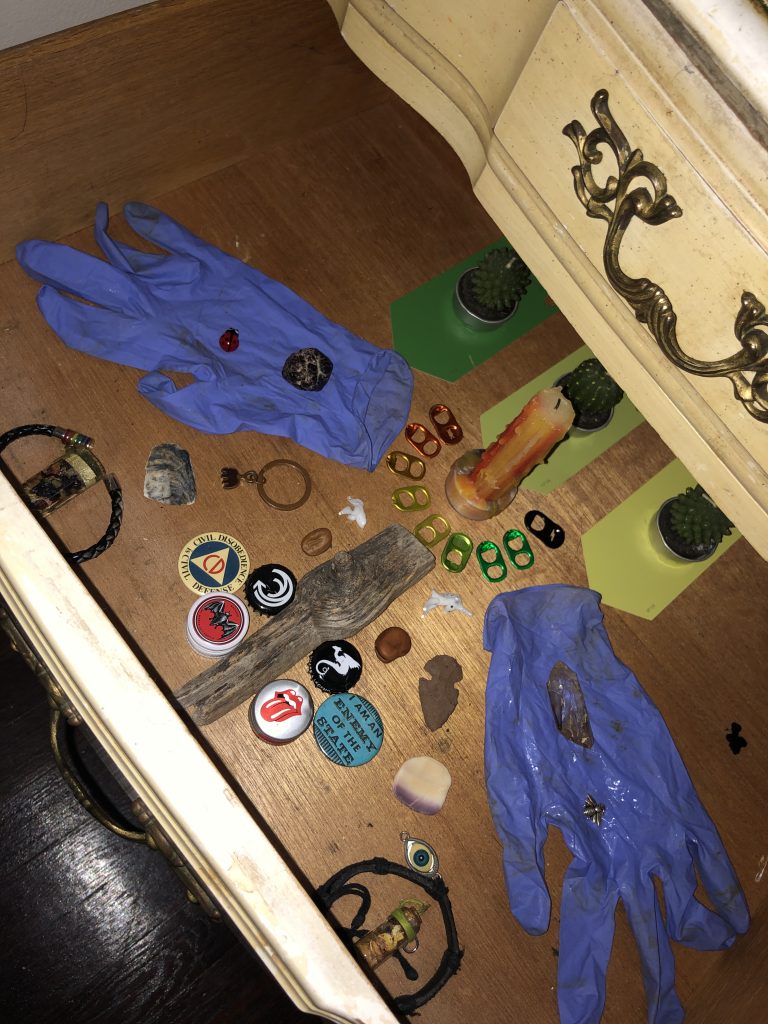
I arranged the most important objects from my evidence – the gloves, candle, wood, bottle caps and tabs, rocks and shells, and the broken figurine – as well as some other valuable pieces, such as the broken bracelets given to me by friends and my mom’s old political pins. I placed everything as neatly and symmetrically as possible inside one of the drawers of my desk to emphasize the privacy of the thought processes responsible for collecting. This is also why I chose to photograph it with the drawer partially closed. Even when these objects are displayed publicly, as sometimes I arrange them on my desk or nightstand, the significance of keeping and protecting them is hidden.
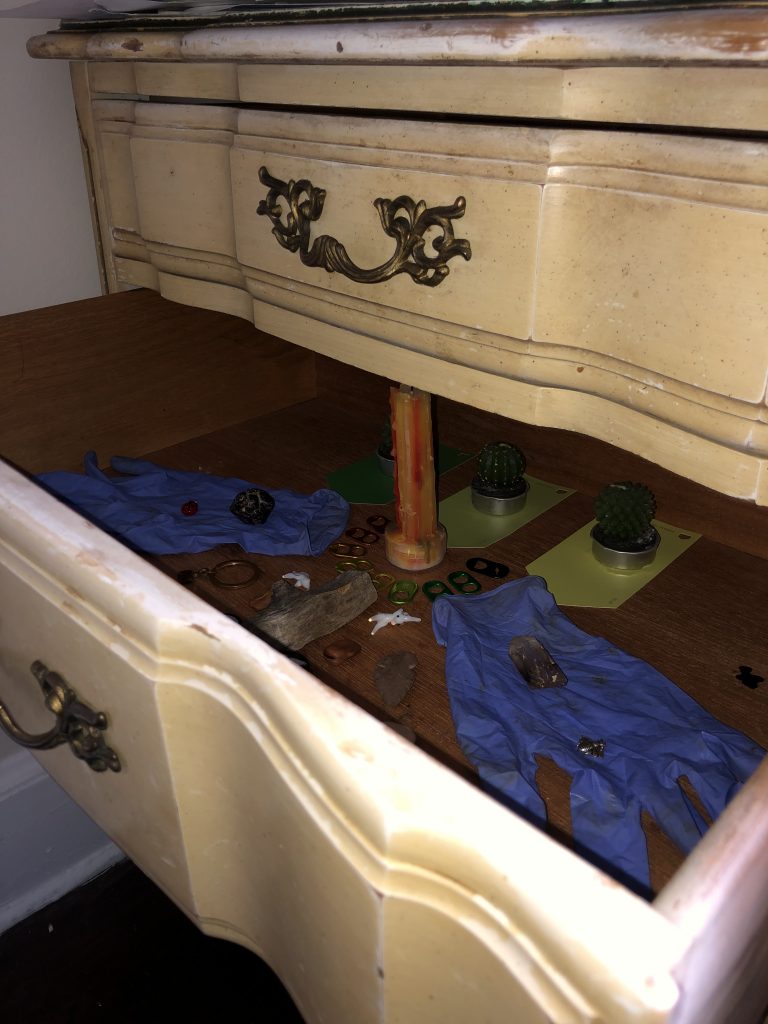
A few of my classmates made associations with ritual, spirituality, and the divine through both the placement of the objects within the drawer and the inclusion of the drawer itself. I felt that this brought forward an important aspect of the concept, and tried to focus on the mystical and ritual facets of my evidence in the second form, in which I photographed myself wearing the gloves and holding the bottle tabs and candle.
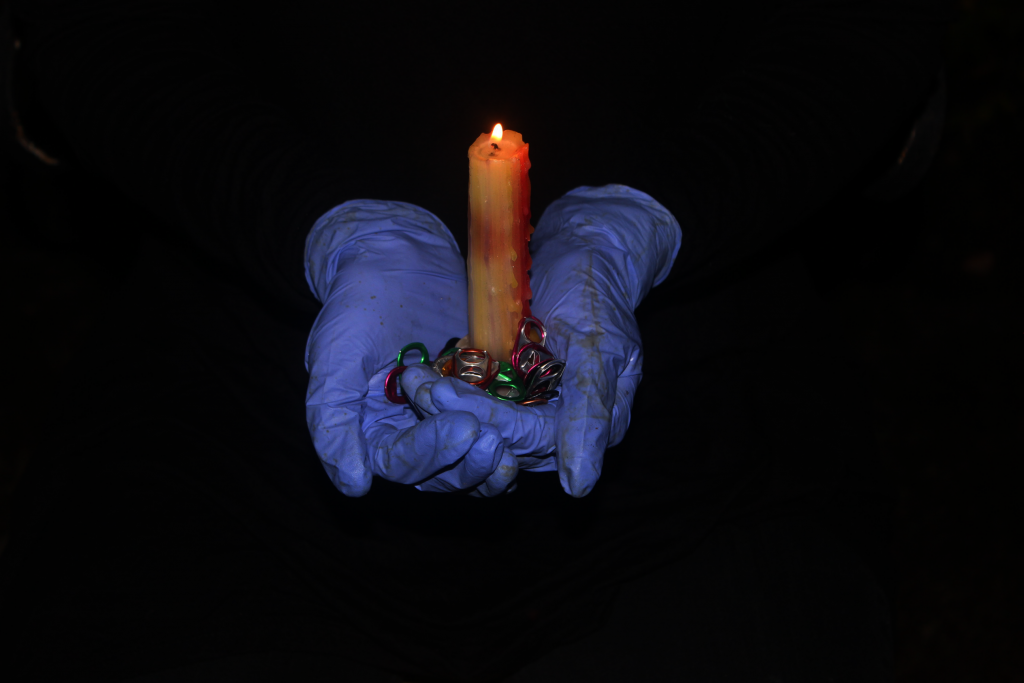
I wore all black and took the pictures outside at night so that the focus of each photograph were the hands themselves and what was in them, rather than the person connected to the hands. I really enjoyed the sense of disembodiment and magic that comes across in this series. During my presentation in class, I included a few photos where my face or the ground is visible, but both my classmates and I felt that their inclusion was jarring and took away from the surreal disembodiment and personification of the objects, so I do not include them here. The most effective part of this form was the series which captured the bottle tabs as they fell from my open gloved hands.
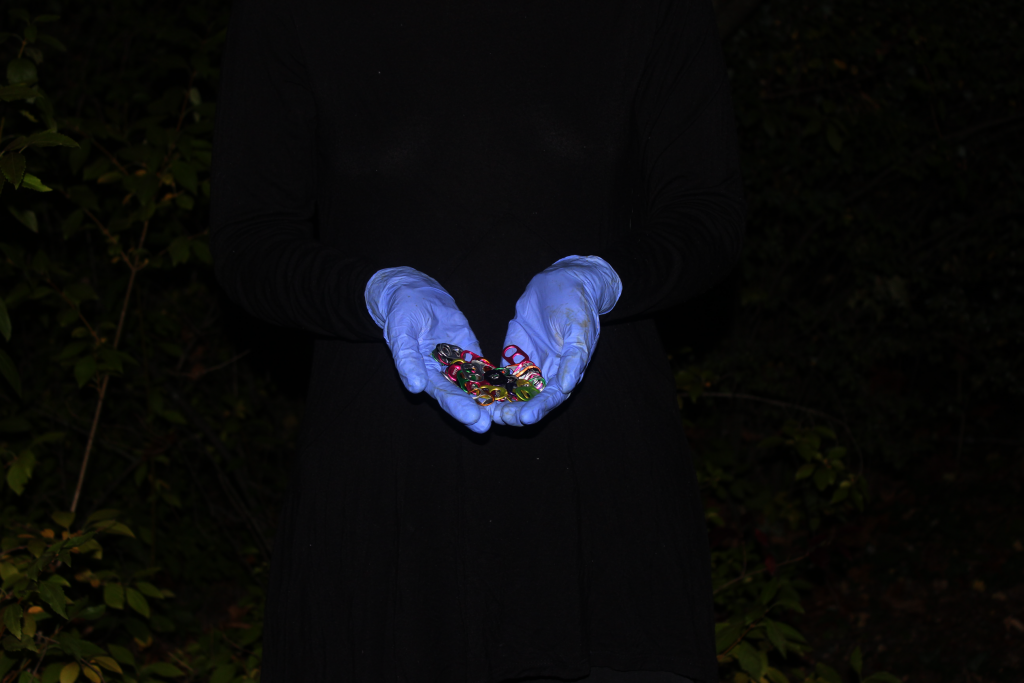
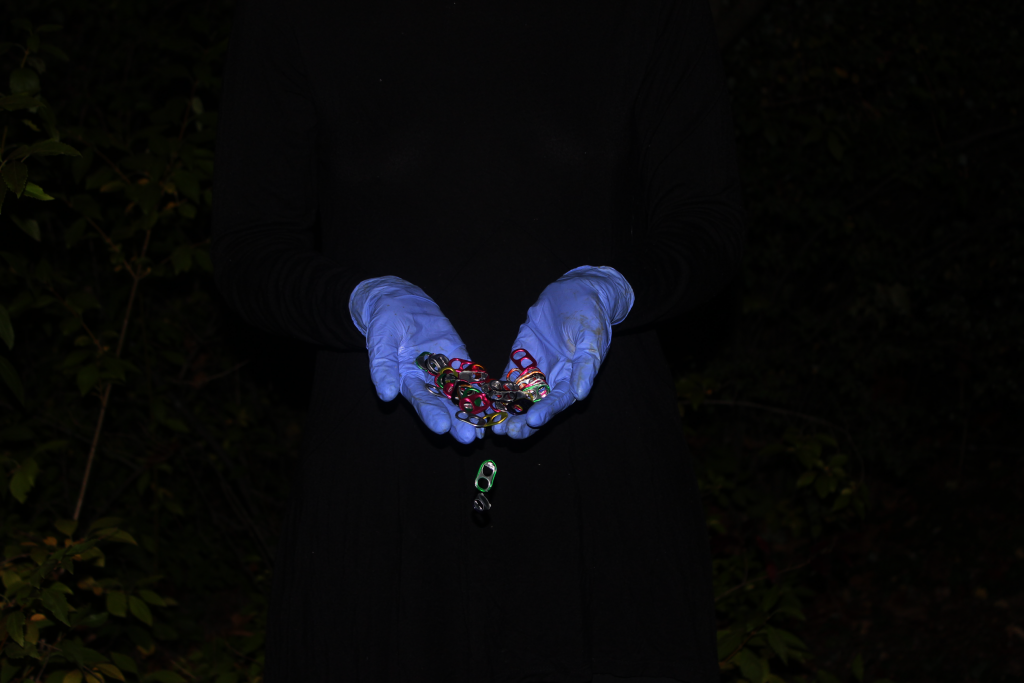
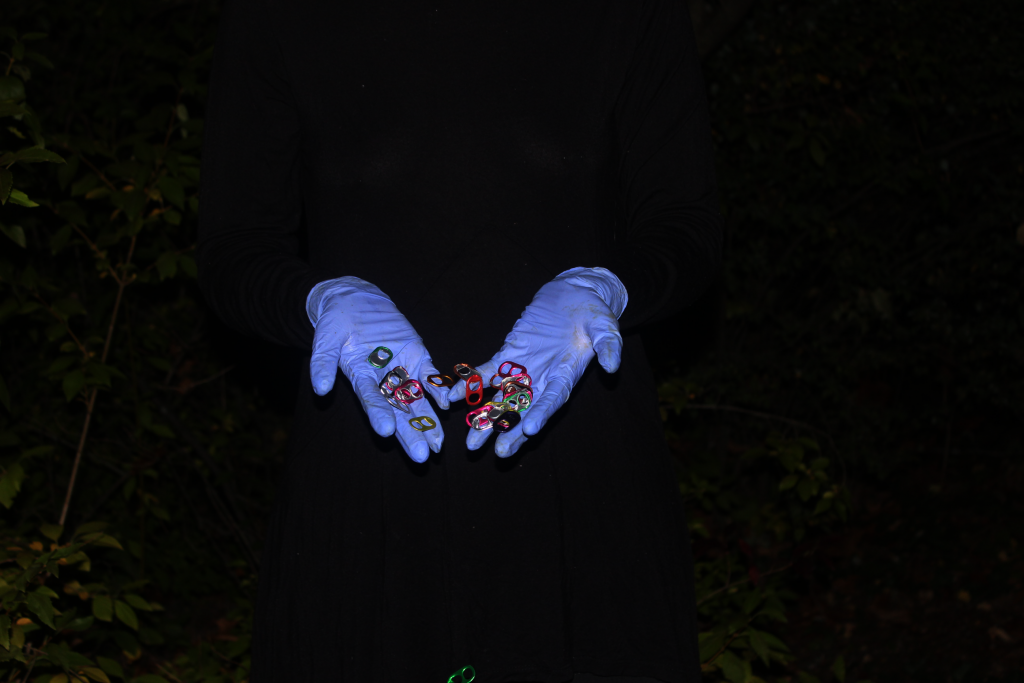
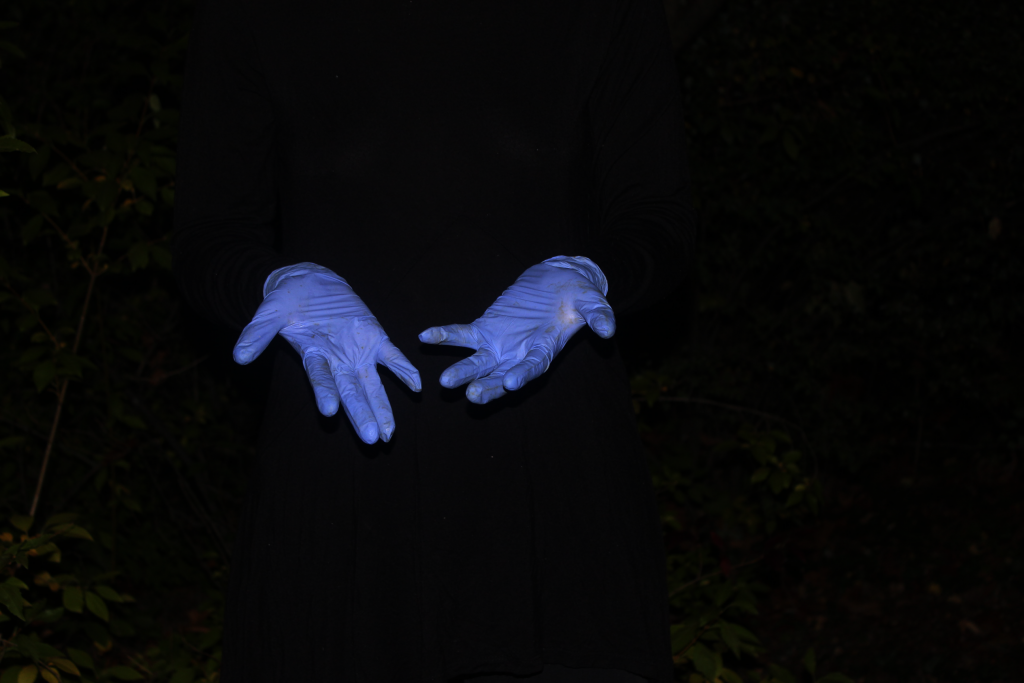
I think the photo set captures the sense of reverence I feel towards these worthless objects and elevates them from everyday objects into being mystical, divine, and important. I also feel that it captures the distress I feel about discarding or throwing away these things I have assigned such a high value to, especially the last picture of my empty, reaching hands. However, this form placed more emphasis on the release of these objects rather than the need to save or protect them. I tried to bring out that aspect of the project more in my final form, which was a video performance piece with three iterations.
In this piece, I arranged all of my many animal figurines and decorations that live on my desk, dresser and bedside table (another collection of mine) as a sort of audience watching the viewer of the videos. I titled all three of these forms as “Shrine,” but I feel my final form encapsulates this the most and the best for my concept. I tied all of the bottle tabs I have collected together with string, which was a very time consuming, frustrating, and painstaking process for me. I dressed in the same black shirt I was photographed in for my second form, and it came across in class as empty space or a void. For me, this emptiness acts as a representation of my mental health when my obsessions grow to take over my life.
The first and third video show me pulling the string of bottle caps out of my mouth and wrapping them around my neck, while the second video shows me putting the entire string back into my mouth. This is meant to show my body as a shrine itself, as it contains and carries out obsessions and rituals. A lot of this comes out in body focused repetitive behaviors, and using my body as a physical container for the material representations of these was a good way for me to get this idea across.
The project as a whole was cathartic for me to display the inner workings of my mind, but also very difficult to actually do and write about in a way that feels authentic, as much of my inspiration, evidence, and process was personal and fairly painful. I don’t think I have fully captured my concept in this post, and don’t know if it is even possible for me to articulate at all. I hated almost everything I produced as I was working on it, but looking back, I am proud of this process and what I was able to produce, and I do feel like I have accomplished what I set out to do in terms of both the concept and the finding of a form.
